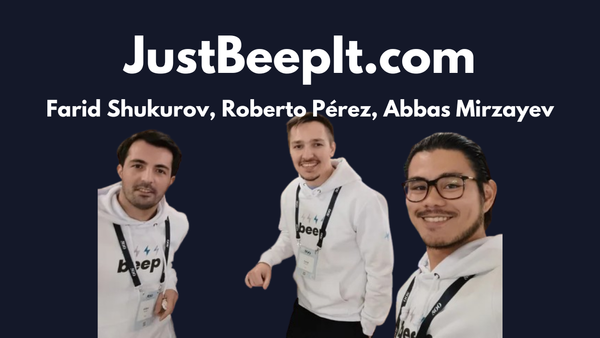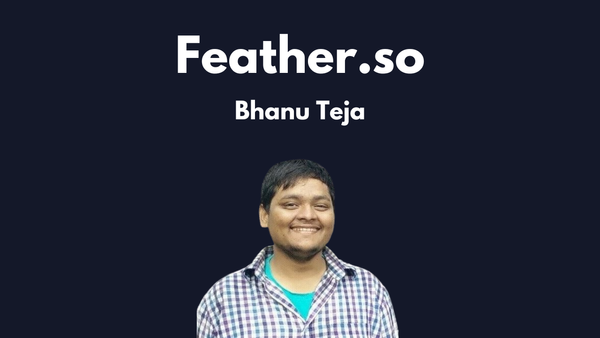How this simple form builder is making $1.2M annually bootstrapping - Tally ($100k MRR)

Today's topic is Tally, founded by Marie Martens and Filip Minev.
In 2020, Marie and her partner Filip decided to pursue their dream. Filip left his company, which he sold to eToro, and Marie quit her marketing job, and together they started a platform to collect travel influencers and hotels called "Hotspot".
Unfortunately, they chose the worst sector to start a business in 2020. The COVID-19 pandemic hit, and their business collapsed, like almost all businesses in the tourism sector.

However, while building "Hotspot", they used form builders to collect influencer information and discovered limitations in Google Forms and high costs with Typeform and Jotform. They recognized a gap in the market for a form builder that was both aesthetically pleasing and cost-effective, especially for startups and indie makers. This realization, along with the challenges presented by Hotspot's closure due to COVID-19, led them to pivot towards building their own form builder, Tally, with a focus on simplicity, and affordability.
Early days... 💡
Marie and Filip spent a couple of months creating their MVP (minimum viable product). By August 2020, they felt ready to share it with their friends and family. The initial version of their form builder was basic – users could add questions but couldn't publish a form yet.
They began by seeking feedback from their close contacts and then reached out to creators, Indie Hackers, and startup individuals who might be interested in their product. While some people didn't respond, those who did became early users and supporters of their brand. Initial users seemed to enjoy the form-building experience offered by Tally.
The founders continued to improve their product, regularly adding new features and gathering feedback from users. As their user base grew, they maintained engagement with existing and potential users, prioritizing user satisfaction by providing immediate support and consistently rolling out new features. Their Slack channel evolved into a thriving community with over 2000 members.
To the moon 🌔
In March 2021, they launched their product on Product Hunt, achieving over 1,400 upvotes, positive reviews, investor interest, and gaining over 600 new users. One month later, they already scaled to 3.500 users and $1k MRR.
At this stage, the focus was to improve Tally. So Marie and Filip expanded Tally's integrations to include Airtable and Notion, while also introducing advanced form-building features like pre-filling fields, redirect on completion, and translations. Simultaneously, they shared their progress and product updates across various platforms including Twitter, Reddit, Indie Hackers Forum, and numerous no-code communities. This approach of building in public helped them spread their story and connect with other startups. They found the Indie Hacker community particularly valuable for learning and sharing insights. Additionally, whenever they encountered someone seeking advice about an online form builder on social media or forums, they made sure to mention Tally.

As their user base grew to 20,000, Tally adopted a product-led growth strategy, leveraging word-of-mouth referrals and integrating product features that facilitated organic user acquisition. This approach propelled them to $10k MRR by February 2022 and further to $30k MRR by October 2022.
Nevertheless, the path to growth was not without challenges. Tally encountered obstacles such as managing technical support demands, preventing abuse, and scaling infrastructure to accommodate varying user needs. To overcome these hurdles, they expanded their team, hiring full-time engineers to accelerate development. Although hiring two full-time team members accelerated feature development, it brought complexities in time management and planning, crowding out space for new initiatives. Since they didn't get the results they wanted, they downscaled the engineering team to reassess their strategy.
Re-launch: Tally 2.0 🚀
In 2023, Marie and Filip worked hard to create a better version of their product. This reflects their effort and commitment of building a great and affordable form builder. They improved the existing features and introduced new ones while giving a new look to Tally. On top of that they also refreshed Tally’s brand. This evolution culminated in Tally 2.0, a testament to their dedication to deliver a top-notch product experience.
They launched Tally 2.0 on Product Hunt on September 19th, marking three years since their initial Product Hunt launch with the first version. Their primary objective with the Product Hunt launch was to draw in new users and allow them to experience Tally firsthand. The launch unfolded amidst intense competition, with three products garnering over 1,000 upvotes each. However, Tally emerged victorious, securing the top spot as the #1 product of the day, week, and month.
The launch was a success, it generated substantial traffic, with 9.8k visitors to their homepage on launch day and 3.9k unique visitors referred from Product Hunt. Additionally, their blog post about Tally 2.0 attracted 1.4k readers within two weeks of the launch. This event also earned Tally a mention in The Verge's Installer newsletter, driving 1.7k unique visitors to their platform. The launch week witnessed record-breaking user signups, with 766 new users on launch day and an average of 2,300 new signups per week thereafter, peaking at 4,400 new users per week.
All this led Tally to new heights, resulting in a surge in user signups and a remarkable growth trajectory, culminating in a $75k MRR milestone. In March 2024, Tally already hit $100k MRR, which is a crazy milestone for a bootstrapped startup. 🤯

This success wasn't by luck. Tally faced challenges but kept going. They listened to users and improved. That's how they grew so much. From hitting milestones to overcoming obstacles, Tally's story shows that persistence pays off.
Marketing Deep Dive: How Tally succeeded?
The two pillars of Tally's successful marketing approach are Differentiation and the Product-led growth strategy:
- Differentiation is crucial to stand out from competitors, especially in a crowded market like form builders, where some players, like Google Forms, have significant distribution despite not having the best product. Marie and Filip understood this from the beginning, and it was the primary reason they built Tally.
Tally stands out for its simplicity, excellent UX, and affordability. Unlike other tools, Tally offers numerous features for free, without limits or paywalls, allowing users to create and collect responses without restrictions. Additionally, Tally Pro provides advanced features for teams and startups at an accessible price. Its ease of use makes it a standout option for all users.
- Product-Led Growth, Tally is free, open and easy-to-use, and this fuels the “flywheel growth”, let's break it down into 3 steps:
1. Providing Tally for free encourages more users to give it a try, contributing to word-of-mouth promotion.
2. Free users showcase a "Made with Tally" badge on their forms, effectively turning them into advocates and lead generators.
3. Approximately 3% of free users upgrade to Tally Pro, generating revenue for the company.
Free users fuel the growth flywheel, accelerating MRR growth as more users are attracted to the platform.

That being said let’s talk about Tally’s main acquisition channels:
- Product Hunt was crucial in acquiring users and generating traffic for Tally during the two launches. However, it's not a consistent traffic source to depend on over time. While it provides a significant boost during launch, its impact diminishes afterward.
- Cold out-reach played a pivotal role in Tally’s early acquisition strategy. Marie and Filip targeted creators, Indie Hackers, and startup founders through platforms like Product Hunt and Twitter.

- Building a solid community and embracing transparency (Building In Public) by sharing their progress was key for Tally's growth. This approach helps them connect with users across various platforms, which in turn attracts more users. Tally nurtures its faithful user community, driving sustained growth through the flywheel effect.
- SEO was a great way to increase organic traffic. They focused on creating optimized landing pages to boost their website's visibility in search engine results. Additionally, they generated customer stories and crafted SEO-optimized content highlighting different use cases of their product. This way helped them get people who were actively looking for solutions Tally offers.
- Tally also experimented with various methods to attract new customers, including launching a Startup Program with discounts (for startups, students, non-profits, and NGOs) and an Affiliate Program for referrals. However, these approaches had limited impact on growth.
Learnings from Marie & Filip's journey:
✅ It's okay to turn down opportunities: With a small bootstrapped team, you can't please everyone, and that's alright. Especially when resources are limited, it's important to prioritize effectively. Remember, a product for everyone, fits no one.
✅ Don't hesitate to seek help: Whatever challenge you're facing, chances are someone else has encountered it too and found a solution. There's a supportive community of Indie Hackers eager to assist fellow entrepreneurs. Marie and Filip looked for assistance from fellow founders. They also regularly asked their users for feedback to improve their product. So, don't be afraid to reach out and ask for guidance.
✅ Keep evolving your product: Marie and Filip continuously listened to their customers' feedback, mapped out a plan, and refined their product accordingly. Keep improving your product based on user input and market trends.
❌ Don’t forget to leverage Paid Ads: When you're starting out and funds are tight, it's common to focus solely on organic strategies. However, as your business expands, overlooking Paid Ads means missing out on a lot of potential. Paid Ads can complement organic user acquisition without affecting it. Achieving a balance between paid and organic traffic is crucial. Despite Tally's $100k monthly revenue and low costs, they haven't tapped into Paid Ads yet, which seems surprising given their high margin.

❓ More isn't always better: Marie and Filip hired more team members to speed up their work. However, while this helped them make more features, it also made things more complicated. They found they couldn't focus on new ideas because of this. So, they decided to shrink their team to think things over and make a new plan.





